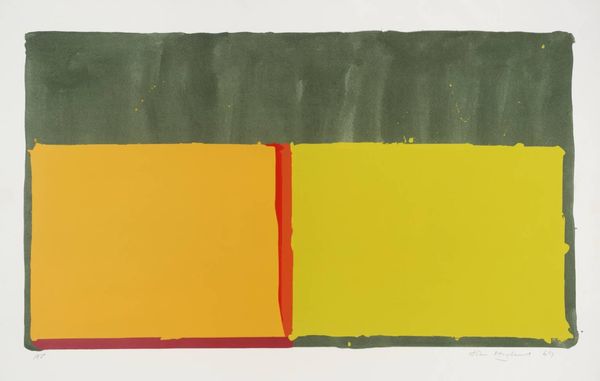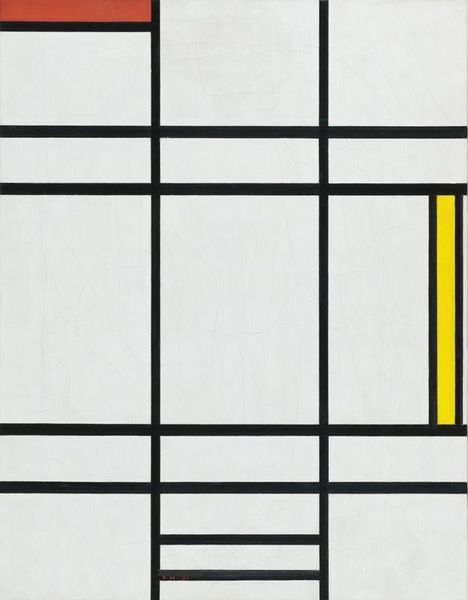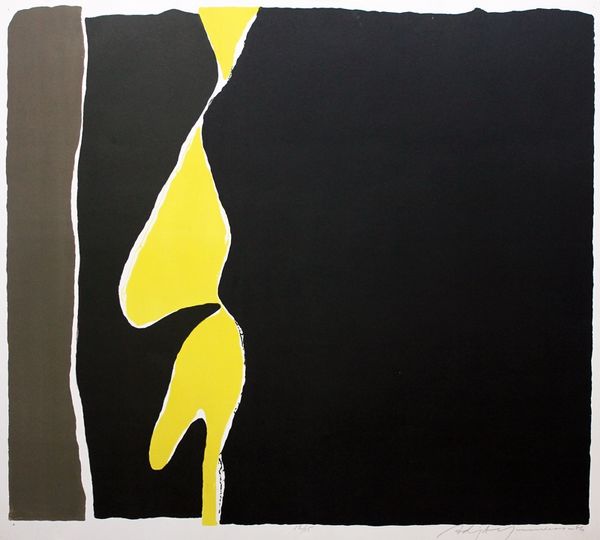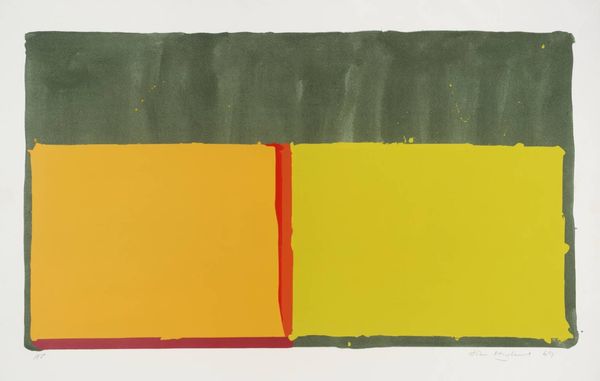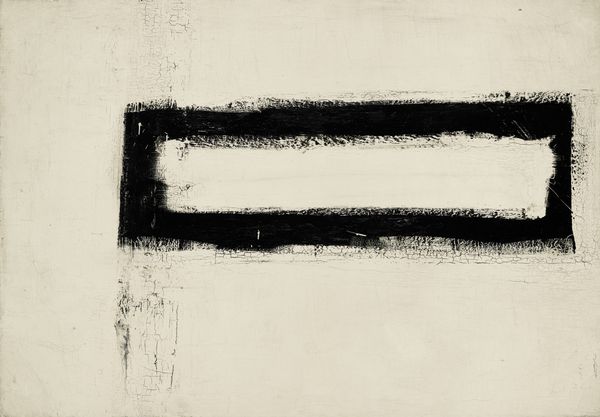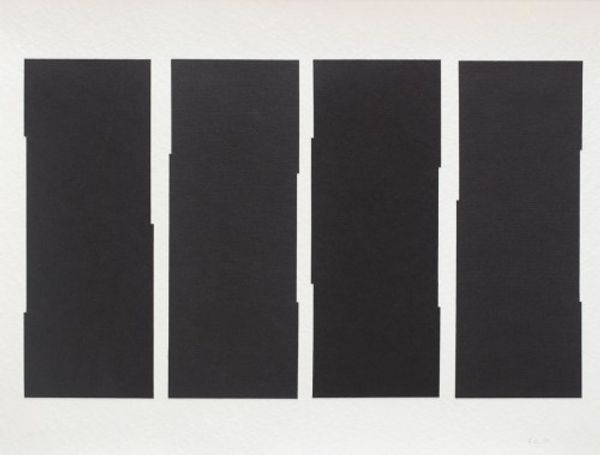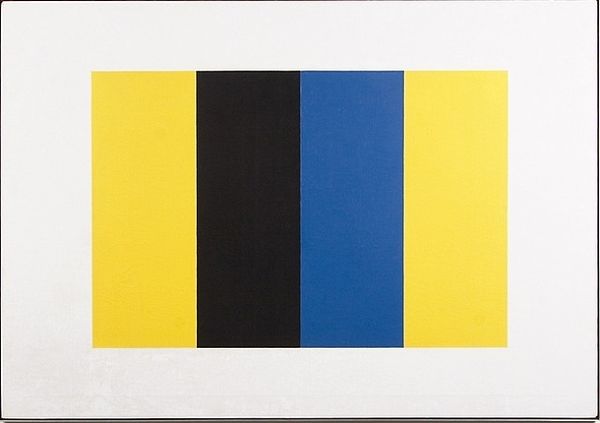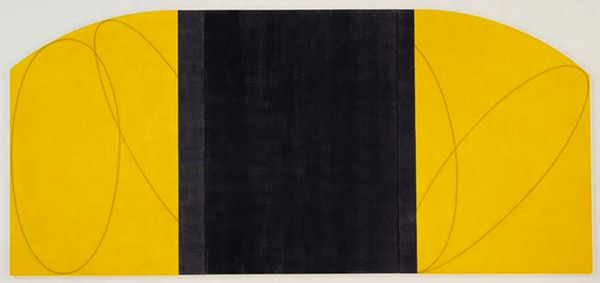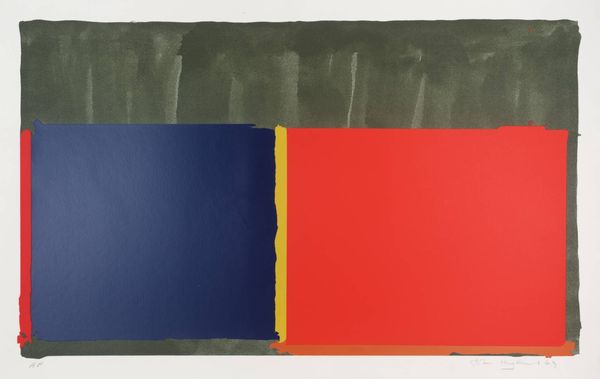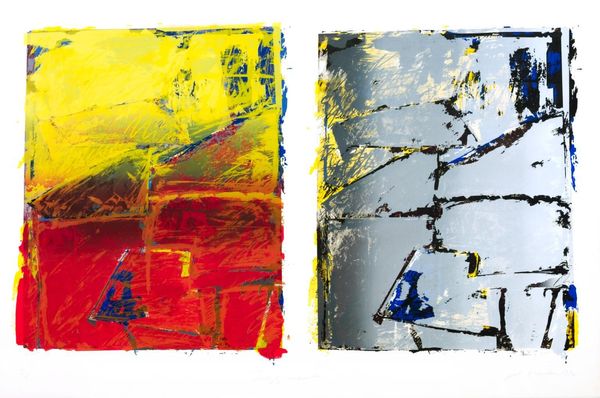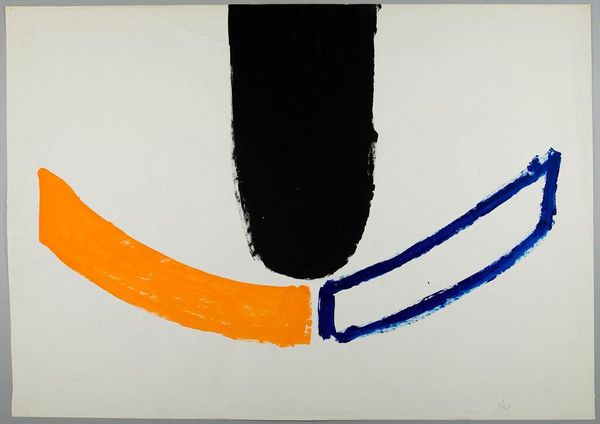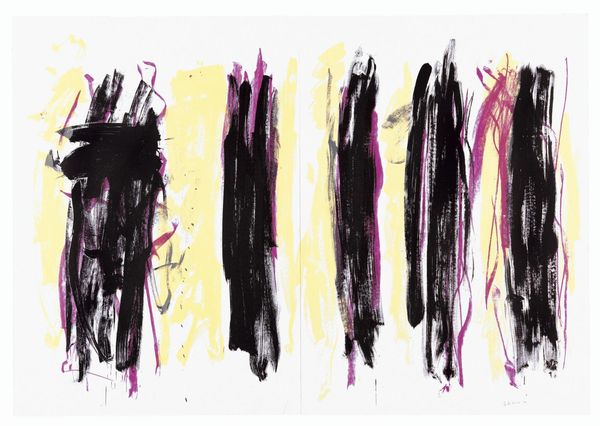
#
neo-concrete
Copyright: Amilcar de Castro,Fair Use
Curator: Immediately, I see bold, impactful blocks of black. Almost severe. What’s your first impression? Editor: It strikes me as quite powerful, almost monumental in its stark simplicity, especially considering it's acrylic on canvas, a rather commonplace material. I wonder what statements it aims to provoke in terms of gender, race and identity. Curator: Well, this “Untitled” piece, created in 1990 by Amilcar de Castro, very much embodies a material investigation. De Castro's practice largely focused on manipulating industrial materials—mostly steel—into geometric forms. It questions, in my view, traditional divisions of artistic labor and consumption patterns. Here he plays with the materiality of paint, almost defying it with geometric precision. Editor: Fascinating. Considering the artist’s Brazilian roots, one might also analyze the work through the lens of colonial history and its impact on cultural identity in the region, even using common resources like paint. How does such industrial resource appropriation reflect broader power structures? Curator: That’s an insightful interpretation. But looking at the 'making' of the work, I'm particularly struck by the visible brushstrokes and their influence on the monochrome. This showcases de Castro's active construction, embracing his process by leaving raw marks and highlighting a more physical manipulation of material. Editor: Indeed, it encourages a necessary dialogue that involves philosophy and feminist theory in conjunction. How is a single bright line deployed amidst these masses, interrupting its monotony? And who has access to define what the 'finished' product entails? It evokes the fragmented social identities within a broader context. Curator: Absolutely. In regards to materials, the flat areas and decisive shapes demonstrate a clear departure from art historical 'finish'. There's no attempt to soften the forms; we confront materiality and the creative method bluntly, offering it as part of its aesthetic presence and social significance. Editor: It truly underscores how a visual language, built on material and context, makes you ponder societal frameworks that shape human experience and perceptions. It seems almost disruptive by bringing forth crucial dialogue, challenging cultural narratives with geometric simplicity. Curator: So it seems, between process and engagement, de Castro leaves a rich path of potential interpretations about industrialization and identity. Editor: Exactly, encouraging the viewers to actively question the artwork and what such simplicity tells about how we construct meaning through shared experiences and inherited materials.
Comments
No comments
Be the first to comment and join the conversation on the ultimate creative platform.
